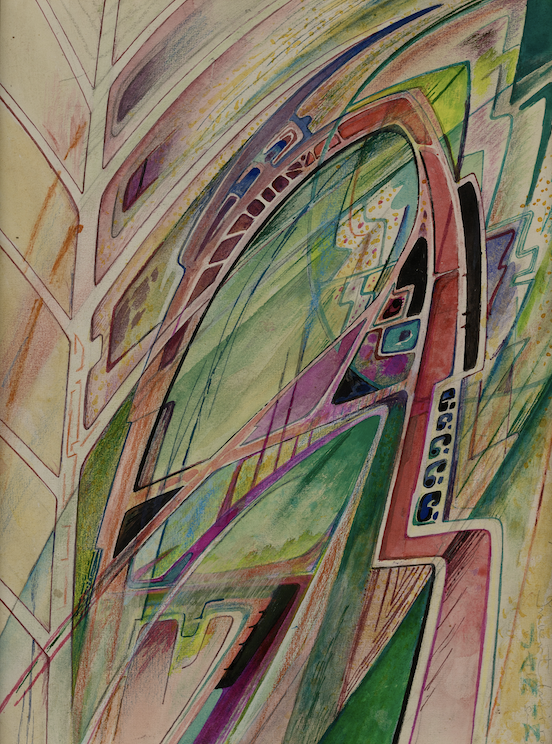Louise Janin
Born 29th August 1893 in Durham, New Hampshire, United States ~ Died 26th July 1997 in Meudon, France

Janin attended the California School of Fine Arts in San Francisco from 1911 to 1914 and then, influenced by her father’s comprehensive Asian art collection, began to travel, beginning in Asia where she became inspired by Buddhist, Hindu and Taoist mythologies that would inform her art. In 1921, she moved to New York and incorporated spiritual themes into several exhibitions and in 1923 Janin travelled to Europe, including Britain, before settling permanently in Paris.
Through the poet and art critic Alexandre Mercereau, she was introduced to two significant artists, František Kupka and Henry Valensi. In 1932, she joined the musicalist movement at the request of Henry Valensi and was a regular participant in the group’s events. At the onset of the Second World War, she was moved to Corsica, and subsequently was interned in a camp in Italy. After the war, her work became increasingly abstract.
During the early 1950s Janin developed an art form which was a variation of the marbling techniques often seen in the end boards of books. She had first seen the technique in 1925 during a visit to a decorative arts exhibition in Paris. For Janin, the adoption of the technique led to years of experimentation with the overt materiality of the art making becoming imbued with the ideas of the cosmos. Janin called them her “cosmogrammes”.
“My first efforts produced aimless meanders, empty of meaning or character. So the wax solution, effecting an ‘all-over’ pattern but excluding freely pictorial design, was discarded. No fissure-making comb, other tools needed for an ‘anti-technique’, as orthodox craftsmen might call it, were droppers, atomisers, spoons, allied to some quite singular devices. A more poetic accessory, found on the beaches of Corsica, is a small bivalve shell, fixed in the joint of a split cane. And who, except for Venetian glassblowers, would imagine breath as a tool ? Yet, concentrated on a portion of the liquid on the picture surface, a well-directed puff accomplishes joining and disjoining. A needle fixed to a brush handle for picking off scoriae (accidental specks) is also a useful tool.”
Selected Exhibitions:
1920s ~ Salon des Orientalistes, Paris
1920s ~ Union of Women Painters and Sculptors Fair
1924 ~ Galerie Bernheim-Jeune, Paris
1925 ~ International Exhibition of Modern Decorative and Industrial Arts
1928 ~ Galerie Georges Petit.
1931 ~ Paris Colonial Exposition Salon des Tuileries
1930s ~ Muscialistes exhibitions at the Salon des Réalités Nouvelles, Paris
1930s ~ Salon of Women Painters and Sculptors, Paris
1930s ~ Salon d’Automne and at the Salon des Indépendants
